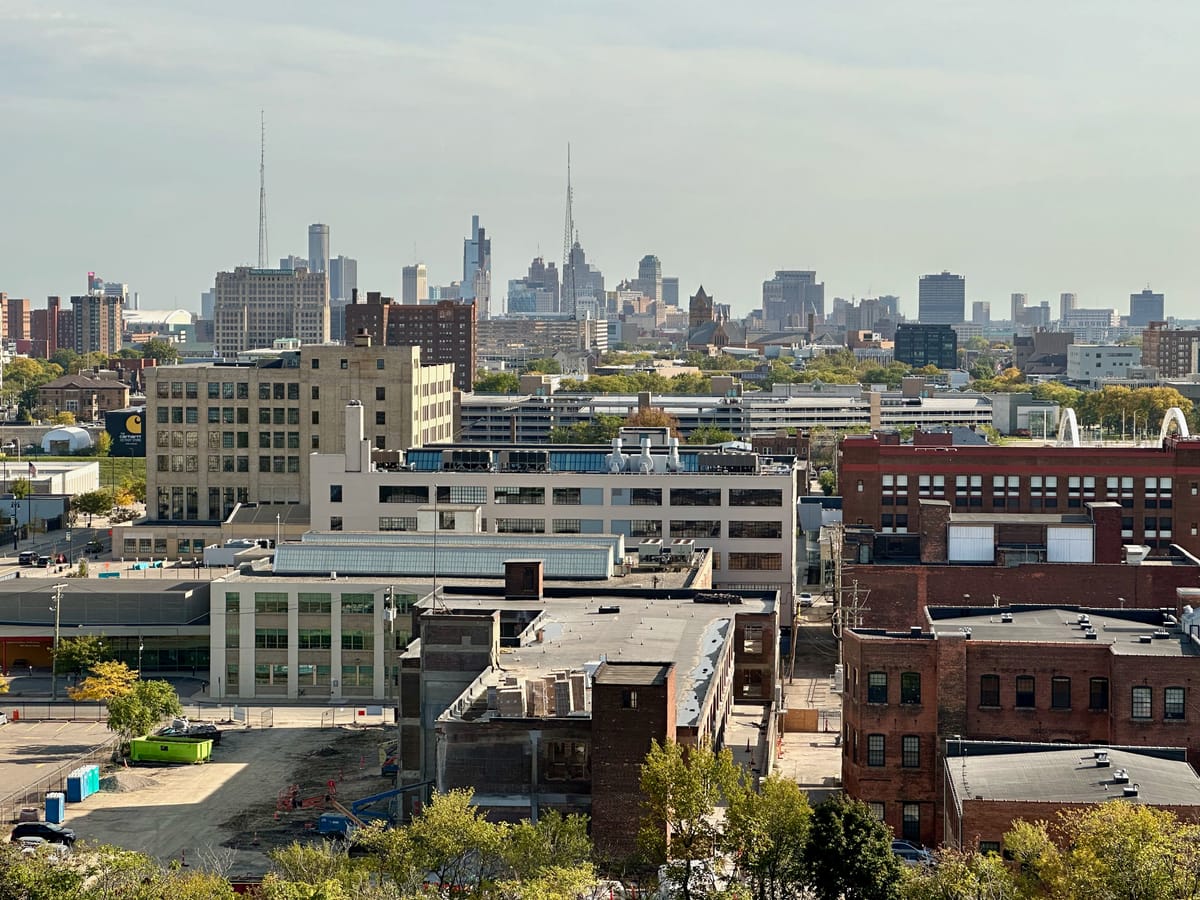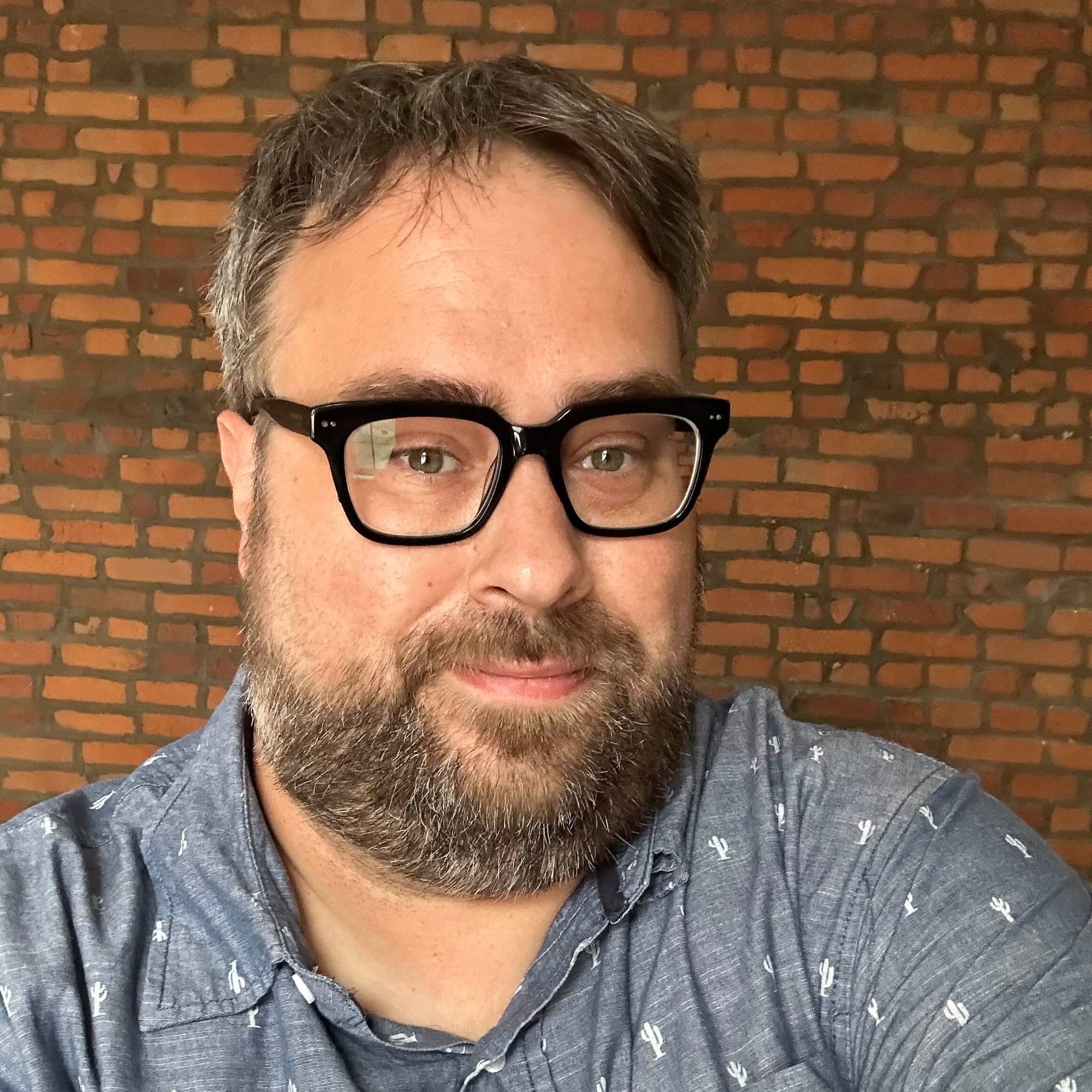I know with the pandemic, fewer people are out and about downtown. But this week, the Lake Guardian was docked right here in Detroit.
The 180-foot long EPA research vessel is on a mission to study our Great Lakes, keep an eye on the lower foodweb that underpins our ecosystem, and discover new species. Now, if that doesn’t sound like the USS Enterprise, I don’t know what does.
There are 26 crew members on board and resupplying. To talk about it. One of them. Joining me on the line is Dr. Annie Scoffield, she is lead for the Great Lakes biology monitoring program out of the Great Lakes National Program Office.
You can listen to the conversation on the April 9 edition of the Daily Detroit podcast in the player below at 10 minutes and 11 seconds in, or check out the automated transcript below.
And of course, don’t forget to listen to the Daily Detroit podcast wherever shows are found:
Visitors to the Detroit Riverfront might know that there is a large floating laboratory sitting right along our river front. What exactly brings you to Detroit?
Dr. Anne Scoffield
So this is the research vessel, Lake Guardian, it is the vessel owned and operated by the US Environmental Protection Agency. And what we’re doing here is we are going through all five of the Great Lakes right now doing our spring monitoring program. So we’re going to a bunch of different sites and all of the lakes. And that takes us about a month to get through it all. And Detroit is an excellent place to stop tie up and take a little break from our monitoring. So we just finished Michigan in here on and we’re taking us up here before we head out to URI.
So monitoring tells me that you’re looking for stuff, what are you looking for?
Dr. Anne Scoffield
The purpose of this survey in particular is to look at both water quality – So that’s everything like temperature, pH and nutrients in the water. As well as the components of the lower food webs. So that is basically everything growing and living in the lake below the level of fish. So all of the microscopic stuff, the small crustaceans, stuff that lives on the bottom of the lake, those are the things that we are monitoring.
A lot of people might think about fish populations, and all that kind of stuff. But isn’t it true to kind of keep all of the ecosystem healthy, you need the stuff at the bottom to be doing well?
Dr. Anne Scoffield
Absolutely. So in order to support fish and fisheries that people like to go out and, and catch different types of fish and things like that, we have to have a healthy lower food web. So that is everything from the microscopic algae growing in the water column to crustaceans that live in the water column. We call them zooplankton they’re like little shrimp like animals, as well as all the animals that live on the bottom of the lake and then the sediment. And that works its way up the food web and ultimately supports fish growth.

And what are some of the issues that you’re uncovering in this work? Because as I was researching about the ship and the work, you know, it seems to be rather important, because the Great Lakes, I think people don’t realize just how unique of a resource we have here. Being that it’s so much freshwater, and they’re frankly, so large.
Dr. Anne Scoffield
They’re huge. They hold 20% of the world’s freshwater supply. So that is a lot of water, obviously a really important resource for drinking water, as well as for supporting local economies through fisheries and other industries. And so our goal is just to monitor what’s going on how the lakes are responding to changes, whether that be changes in the nutrients that are going into the lake, or things like climate change, or invasive species that have come in and impacted. So we’re monitoring to detect how things are changing in response to those as well as to do things like early detection of maybe some new species that have shown up in our lakes.
Yeah, I actually wanted to ask you about the new species, because I was going through the press materials about the late guardian. And it talked about the discovery of new things. Now. At first, when I hear about the discovering of new sea species, my mind first goes to Godzilla. So can we confirm there’s no Godzilla in the Great Lakes?
Dr. Anne Scoffield
Not that I’ve seen, I’m not aware of any Godzilla or lake monster or anything like that.
So what are you finding?
Dr. Anne Scoffield
You know, there are a lot of invasive species that have been introduced over the years that have had impacts on the lakes. So a couple of the examples that people are likely to have heard about would be Dreissenid mussels. So those, people probably heard about zebra mussels. There’s another species called the quagga mussel that also is in the lakes now and has really changed a lot of things about the ecosystem nutrient cycling and water clarity and things like that. There are also though some species of zooplankton. So again, these are the little crustaceans, a millimeter long, maybe some larger that are important parts of the food web too, and can have really big impacts. One that’s important is the spiny water flea. That can get caught on fishing lines and things like that. So that’s one people might actually see themselves if they go out and are fishing in the lakes. But then, there are some that are a lot more cryptic. We find them when we take a sample from the lake and take it back to the lab and count all of the animals in it. Our academic cooperator or partners that we work with at Cornell University have actually found three new species recently of non-native zooplankton. So, I’m saying non native, because they haven’t bloomed into these huge populations or anything to be what we would call them basis, but they are there and they’re new. So we want to keep tabs on them.
And how do these new species end up coming into our lakes?
Dr. Anne Scoffield
Historically, a lot of the ways that they’ve come into the lakes are through ballast water. So that’s the water that comes in on, you know, big shipping vessels that they have to exchange from the ocean. And so historically, that has certainly been a source of introduction, you know, there are a lot of ways that we’ve tried to manage that and put, you know, regulations in place so that we can minimize that risk. But other ways that things can move around and even spread from the Great Lakes to other smaller lakes, and vice versa, is by smaller boats, people that are going fishing are doing recreation between different water bodies. And that’s why we have things like y boat checks and guidelines for making sure your boat is clean when you go from one water body to another.

I think that’s so crucial. And this is something that I kind of learned, while talking, funnily enough, one of our most popular episodes was when we did a conversation with one of the people who heads up the sewage in Metro Detroit, and the sewage discharge and handling that issue is that all of our water systems are very connected, even if you’re inland.
Dr. Anne Scoffield
Yes, absolutely. The Great Lakes watershed is really big. And a lot of these things are connected. And, people farming in different areas in the Great Lakes Basin, or you just mentioned sewage, or even just, you know, fertilizer that you put on your lawn or other things trash that doesn’t get disposed of properly. All of that can affect the Great Lakes ecosystem if it’s in the watershed and making its way into the lakes eventually.
So before I let you go, is there anything about ship life, all of that that stands out? Or even I would say, you know, visiting Detroit and tying up Is this your first time tying through? Or is this something you you regularly do
Dr. Anne Scoffield
We do come through Detroit regularly, this is a port stop that we always make on this survey, as well as our survey in the summer. So every April and August, we are generally tied up along the dock and there may be some other times a year as well, depending on what surveys we have going on. Yeah, we are living on the ship this year. All of us that are on the boat right now. We’re off here for a whole month to go out on this whole survey usually will have different people coming through and some people might get on or off in the Detroit port stop. But this year, we’re taking safety as a priority and we’ll be on for the whole month. So the trade is always a really nice spot to stop when I’ve been here before. You know, I know. A lot of us like to get out and run along the Riverwalk and visit local restaurants. We all have our favorites. This year. We’re staying on board the vessel but we look forward to hopefully next year when it will be safe to go out and about and enjoy Detroit as a port stop again.
If you want to know more about what the EPA is doing in the Great Lakes. You can follow them at @EPAGreatLakes on Twitter. Also, I will put a link in the show notes to more about the ship. Dr. Schofield, thank you so much for your time on Daily Detroit.
Dr. Anne Scoffield
You’re welcome. Thank you for having me on. Happy to talk to you.












